Submitted by WA Contents
CAA Architects creates flower-like double-deck terrace in the interior of restaurant in Beijing
China Architecture News - Jan 20, 2020 - 15:31 4801 views
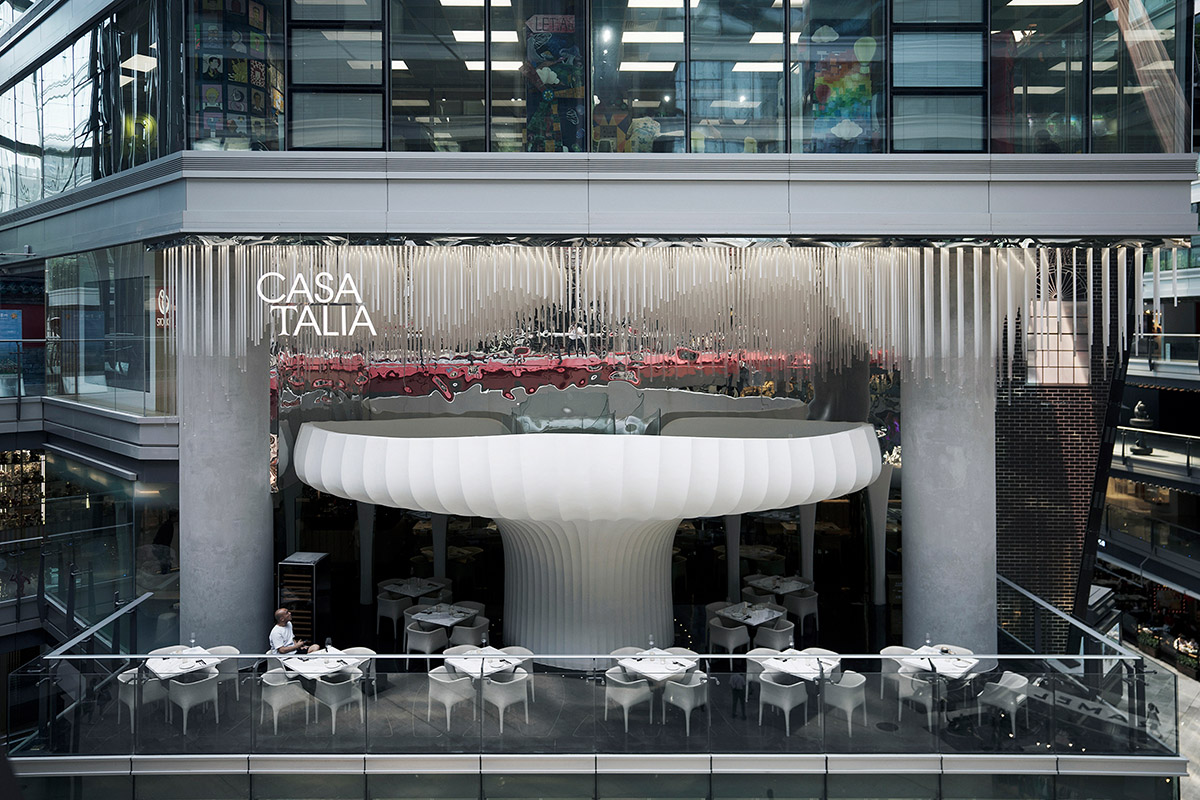
Beijing, Tokyo and New York-based architecture and interior design studio CAA Architects has created a giant flower-like double-deck terrace in the interior of a restaurant in Parkview Green mixed-use complex in Beijing, China.
Called Casa Talia Restaruant, the restaurant is situated in a mixed-use complex of Parkview Green. People who visit will immediately notice a pure, crisp-white piece of artwork suspended 100 meters off the ground in the heart of the building. This is the new work done by the architectural firm CAA lead by Liu Haowei, the Casa Talia restaurant.

"Rain dew animates the growth to the flower of life," said Liu Haowei, Principal of CAA.
The project, which is located in the void space between the podium and tower of Parkview Green where the renowned Dunhill restaurant used to occupy, is clearly visible from all angles of the central public space.
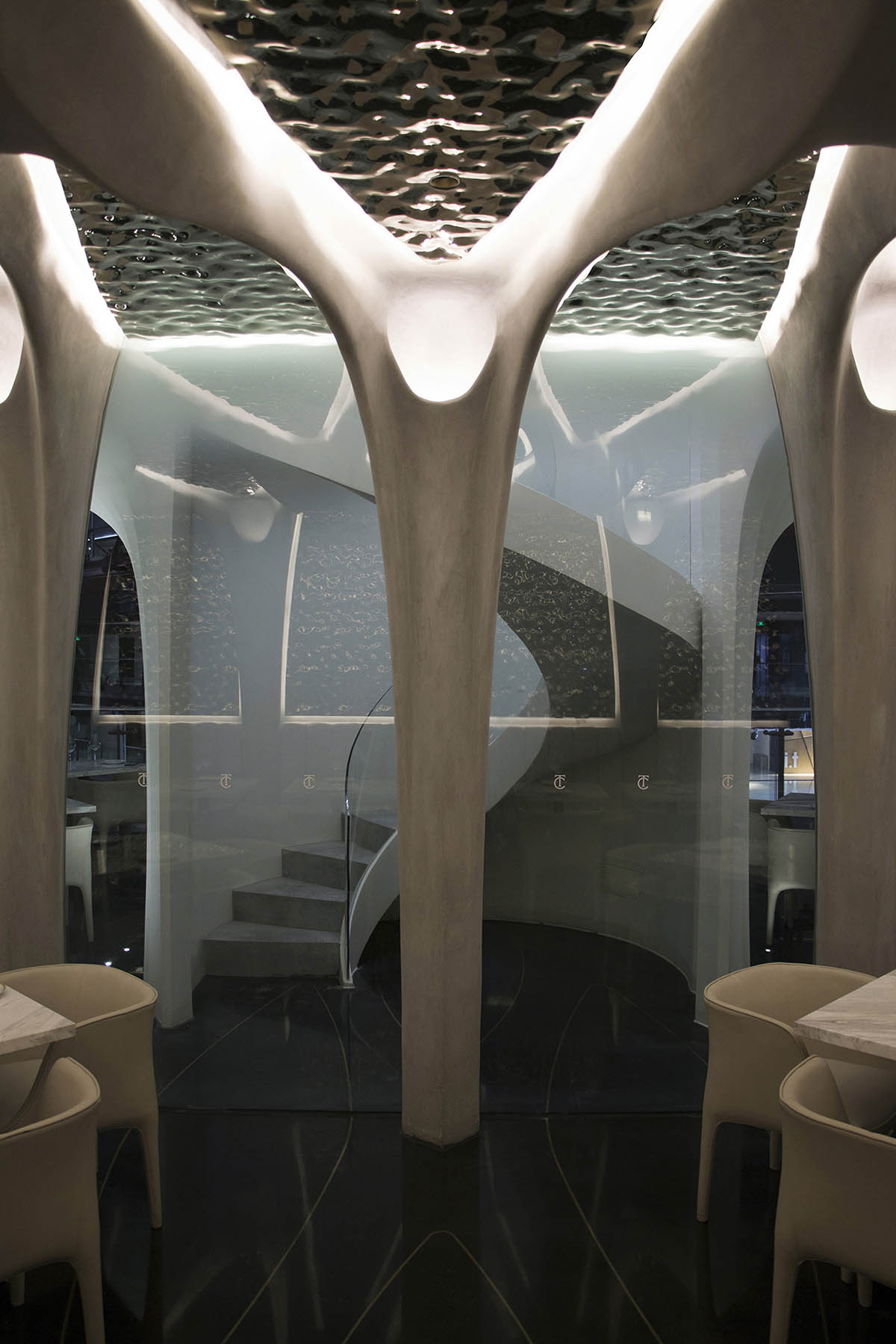
The design is distinct from conventional commercial spaces because it separates the project into two parts: the exposed, public roof terrace, and an enclosed indoor space beside it. The public terrace has a height of seven meters, which provides a panoramic view of the four-story commercial culture of Parkview Green.
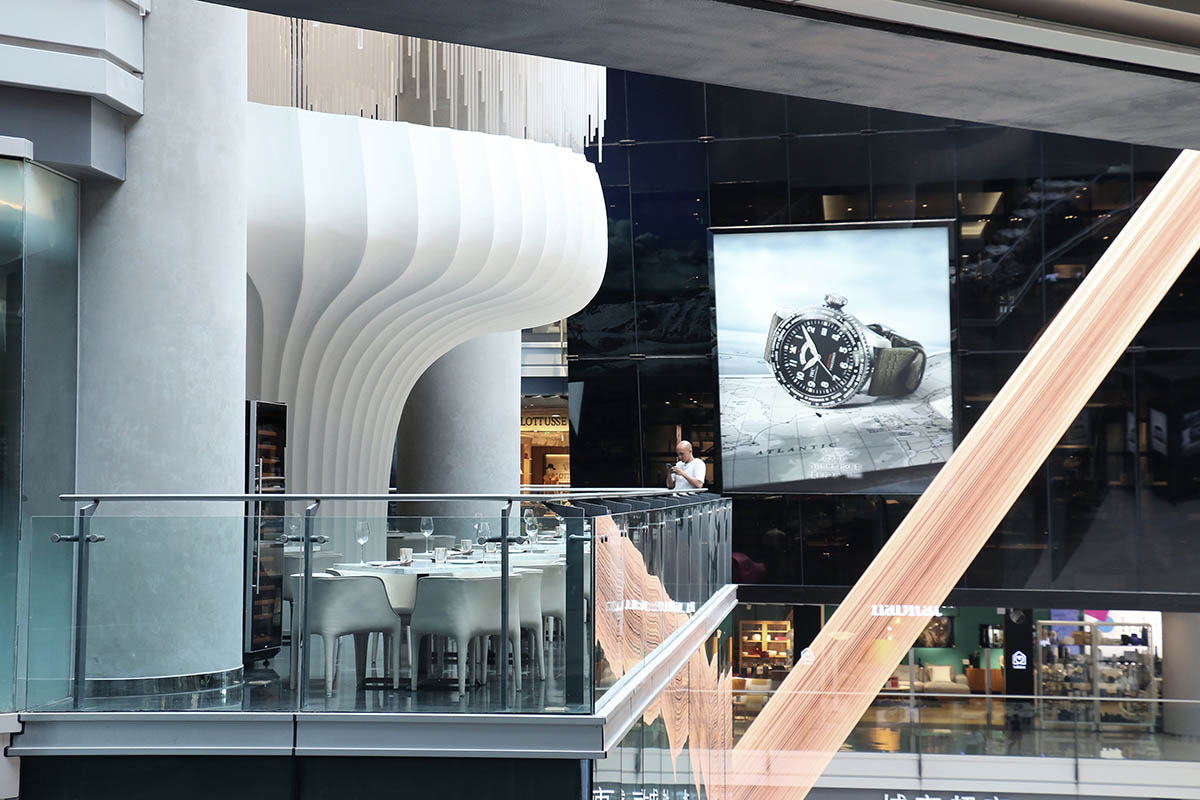
With Dunhill’s departure, it allowed for the potential of a brand-new story to be told in its old location. The arrival of Casa Talia rejuvenated the story once again and the aerial landmark is restored.
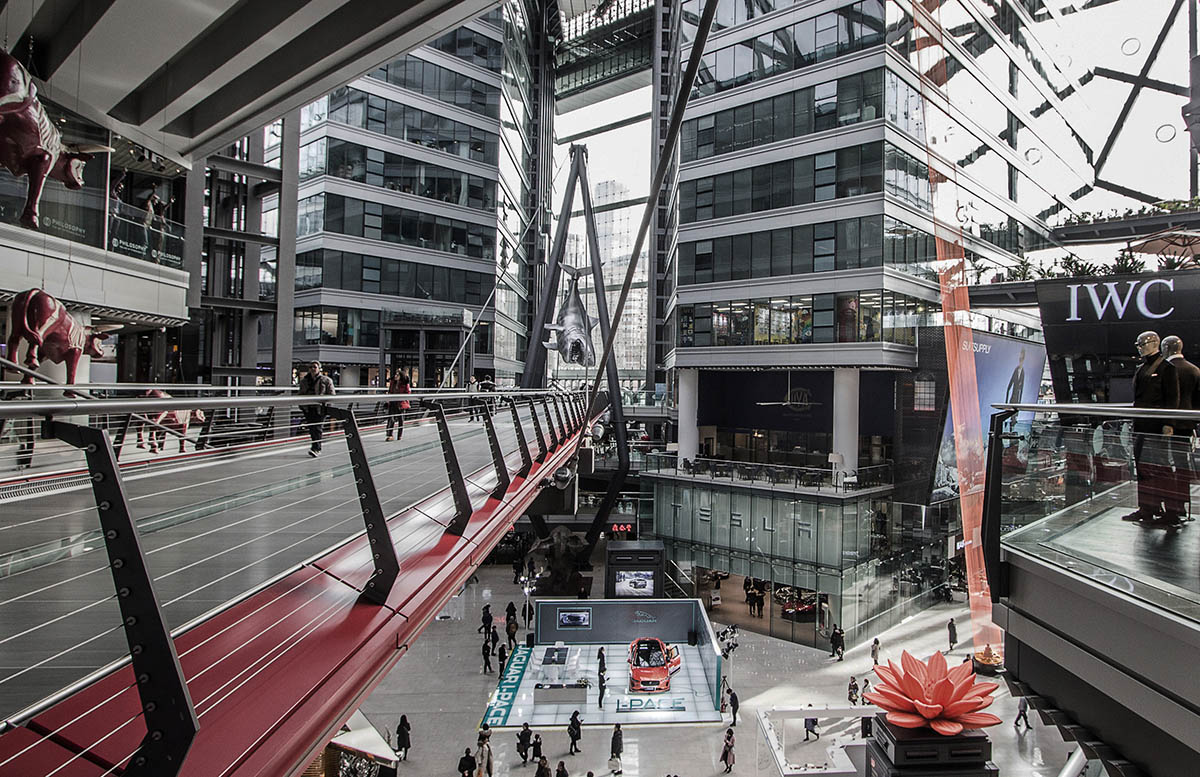
In ancient Hebrew, the word "Talia" signifies the dew of the heavens. Because of the restaurant’s Spanish heritage as well as its special location, CAA decided to integrate a surreal spatial expression conjugated with Mediterranean style. This "flower of life" being nourished by the raindrops above is most fitting to the restaurant’s branding concept.
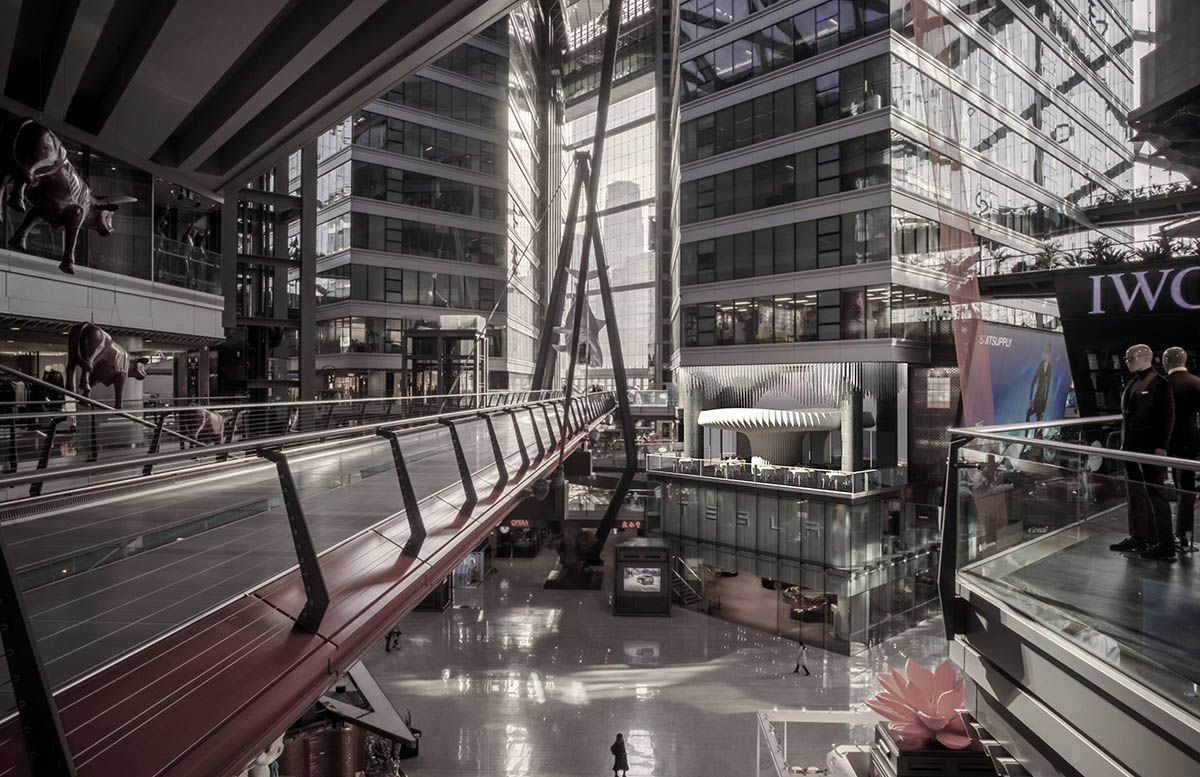
When people enter this radiant public space from different entrances, they’ll be able to marvel at this new-born installation. Like the goddess Venus saturated with rain, her elegance attracts all who pass by, yearning to investigate.
Walking into the interior of the restaurant, it’s as if one had entered a mysterious section of a grand religious sanctuary. The concrete skeletal structure forms a novel spatial system, interwoven with numerous layers, each with its own sense of fantasy.
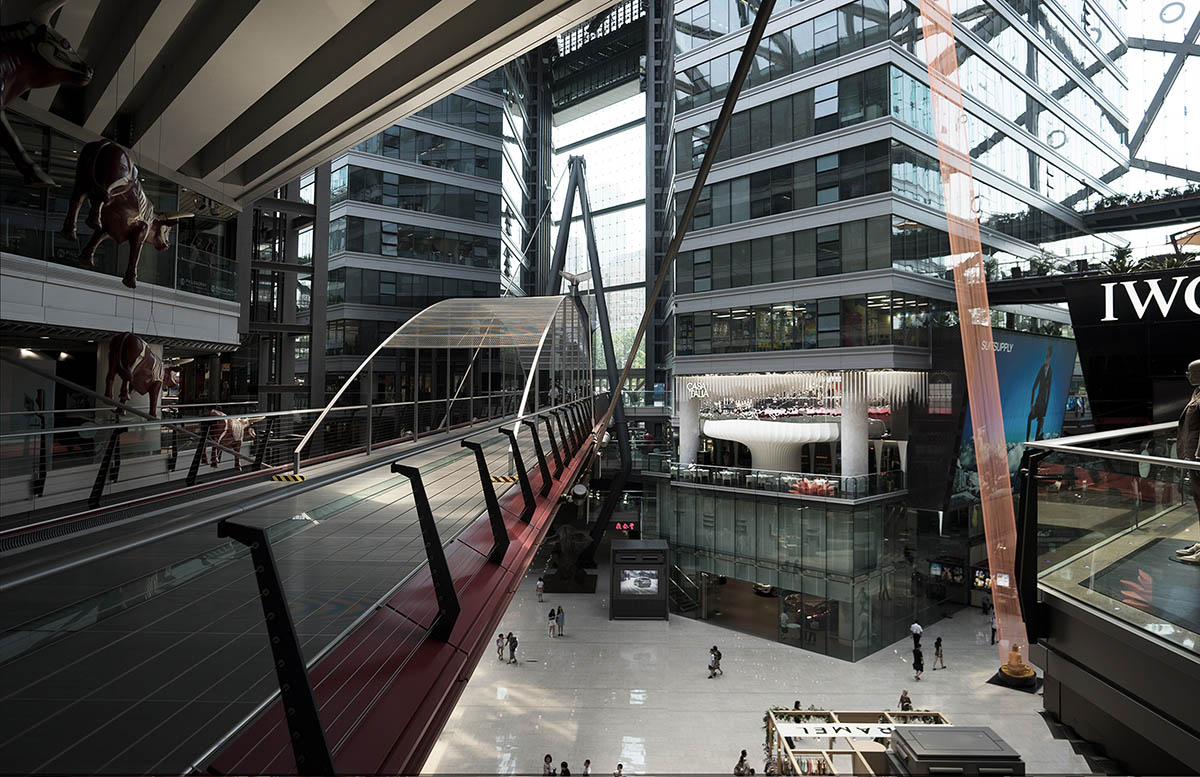
From simple, rectangular spaces, to endlessly fantastical caves, the magic of the newly erected skeletal structure is that it pulls people into a surreal dreamscape, drowning out the hustle and bustle of its surroundings.
This mysterious spectacle does not only employ simply arcs, but rather utilize elegant complex curvatures to render and connect its ceiling, walls, and ground. The lighting hidden in the structure of its skeleton illuminates its associated textures. It unveils the alluring paradox between the concrete and corrugated metallic forms flaunting the contrast between warm and cold; only with flesh and blood can a structural space be brought to life.
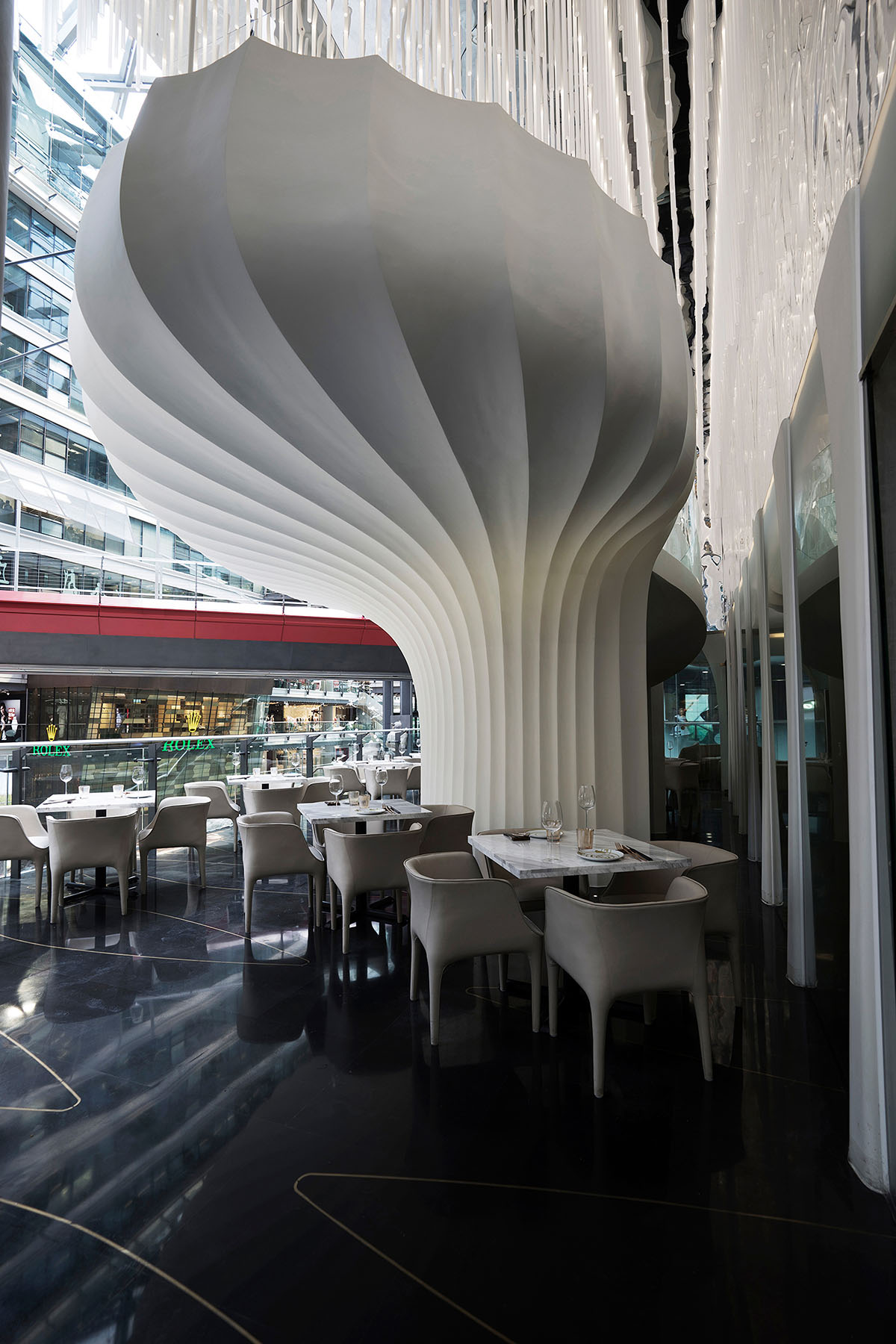
This symmetrical church-like structure dons only black, white, gray, and gold. CAA respects this formal atmosphere while also providing a rich and dynamic dining experience. From the cozy sofa, people are able to fully admire the majestic rotating staircase of the outer terrace.

The restaurant’s VIP room was designed with a cohesive inside-outside relationship in mind. This provides a private environment for patrons, while still maintaining its relationship with the external terrace through its use of a slightly different tint of color. In addition, the custom-made Nebula light not only illuminates the room but also gives it a nimble atmosphere.

The rich natural lighting of the large roof is an important design feature of Parkview Green and so CAA took the same concept but altered it to suit an interior setting. It was designed to resemble a budding flower, growing from the inside to bloom at the heart of the commercial space that surrounds it.
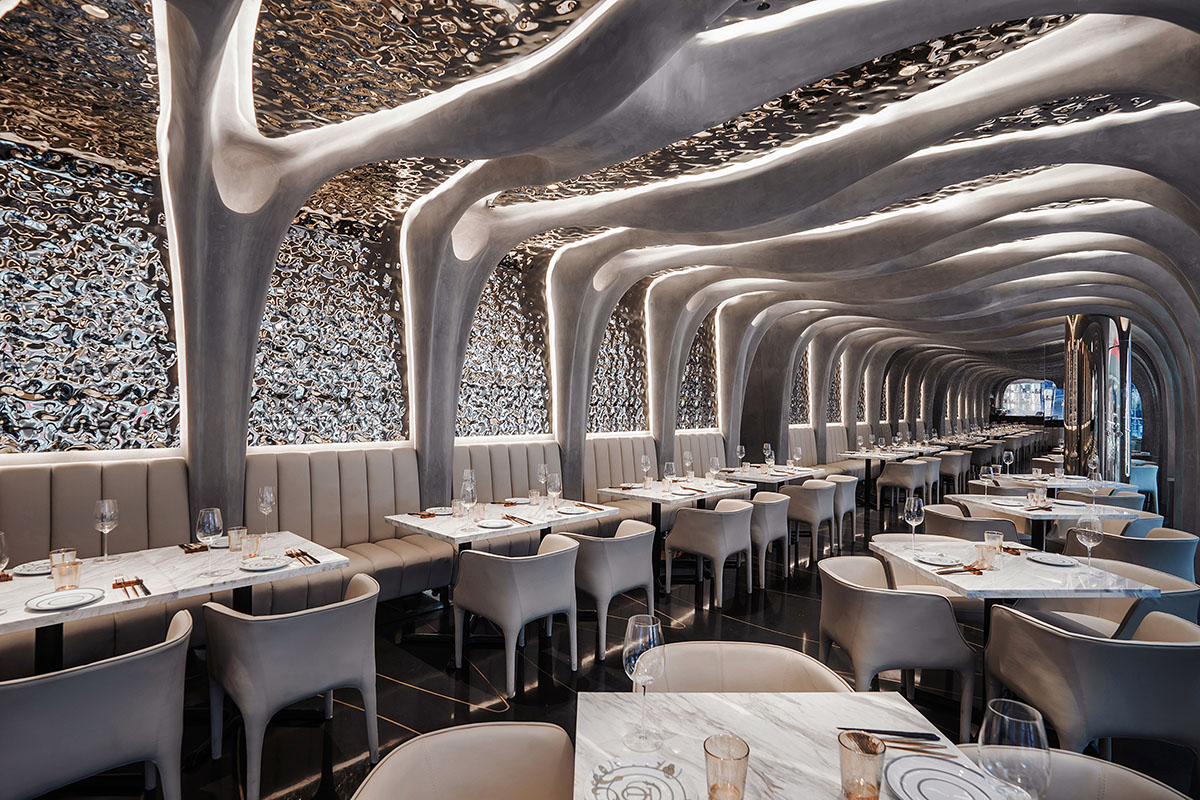
Some say it resembles a wave, a shell, a grail, and even the shape of someone’s palm cradling a pearl. In the perception of the architect, it can be any form of life bathing in the sun’s rays, warm and durable. This was the first impression of this space by the architect and thus evolved into a guiding concept for the entire project.
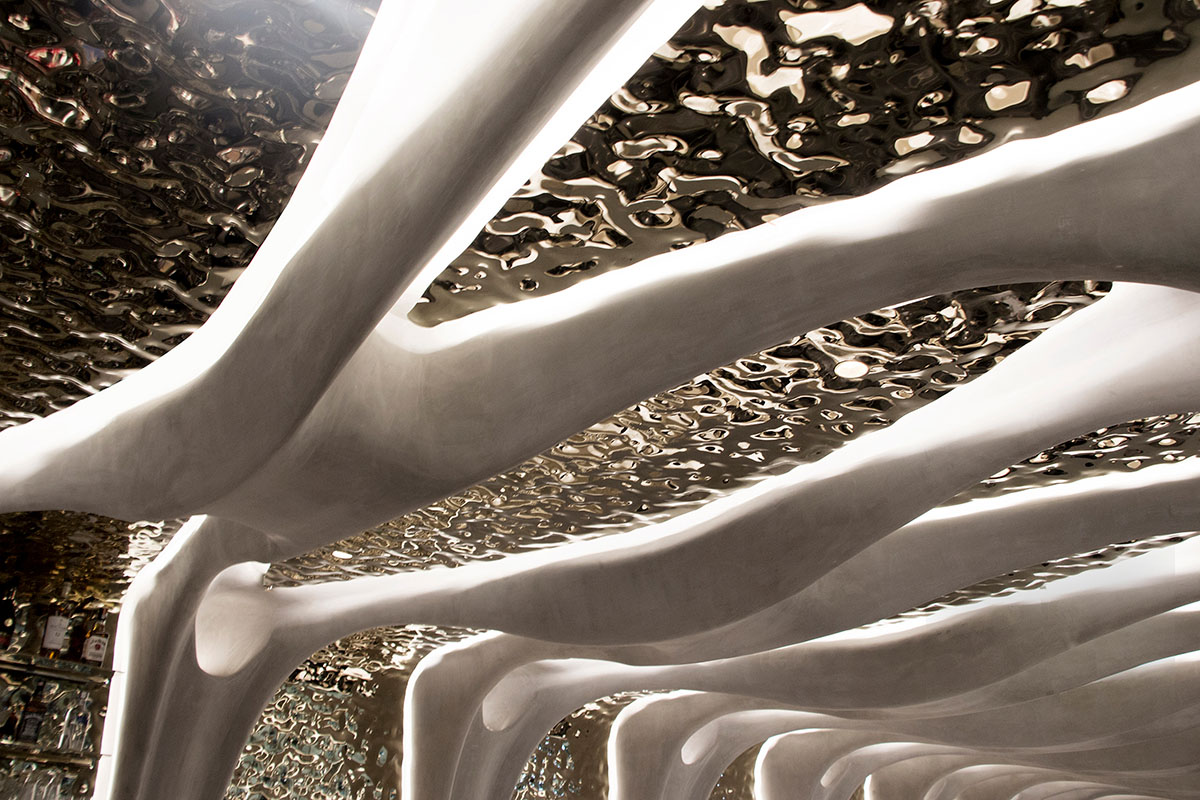
The flower of life cantilevers 4 meters from the ground, and as the highest prioritized design element, Liu Haowei believes that it must not only ensure its structural integrity, but more so needs to boast its elegant curvaceous form.

The initial structural schematics proposed by the engineers were simple and conventional, and did not achieve the effect of the sought-after blooming flower. So, the architects had to continuously iterate and communicate with the engineers in order to achieve a fine balance between mechanics and aesthetics. After months of collaboration, the final structure stood gracefully and firmly at its site and could accommodate up to 50 people at once.
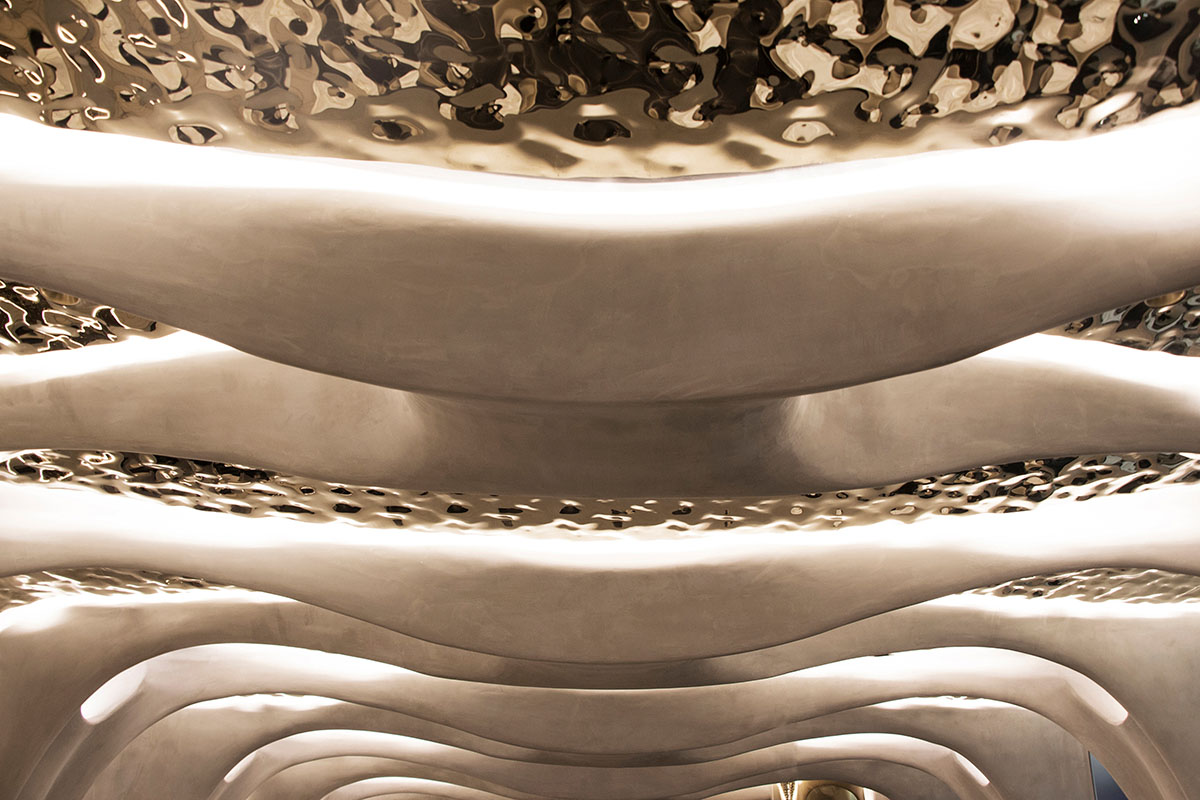
The flower of life transforms the single-floor terrace into a double-deck terrace. Through a small spiral staircase, you can ascend into the heart of the flower, which has a completely different special experience as the spaces below. The flower is a clean slate, free from outside interference, as if standing at the center of living organism, omniscient of the commercial and public areas of Parkview Green.
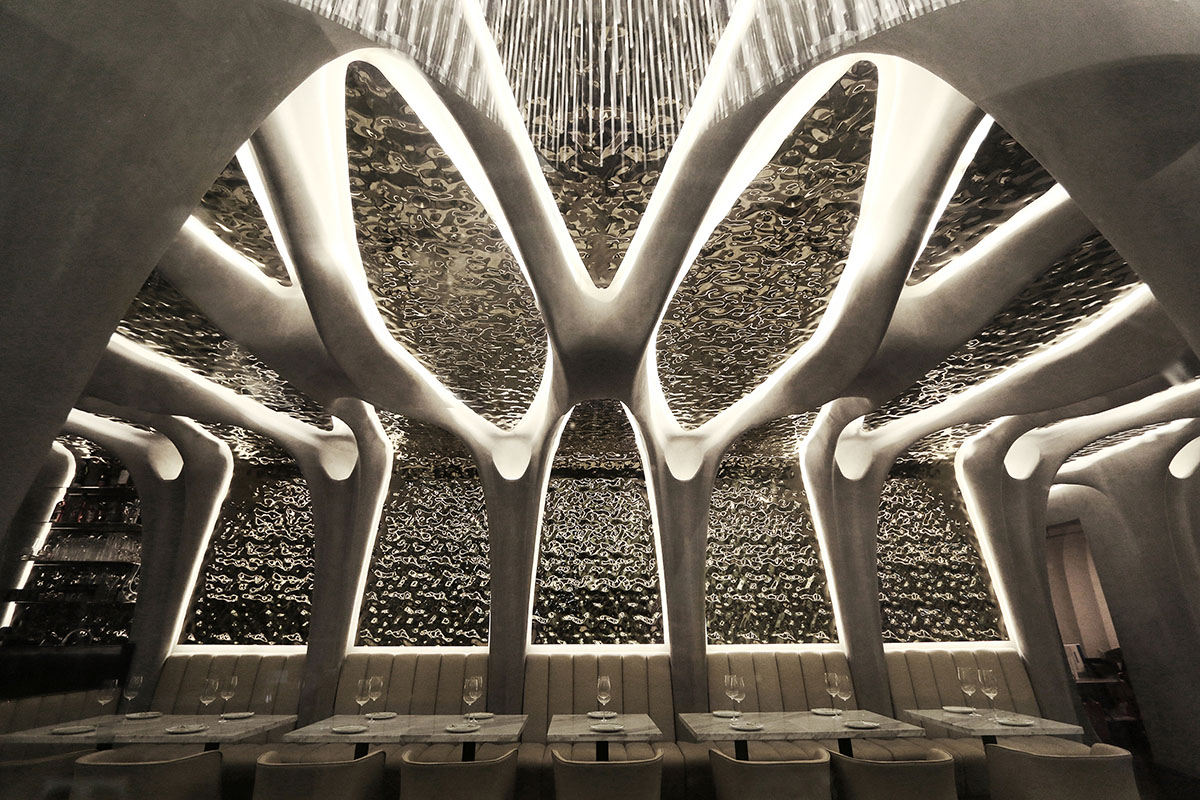
In addition to the open terrace, there are also seats situated at the stem of the flower that are worth a special visit. With the flower pedal hanging above you, people are not only able to observe the culture of Parkview Green, but also can also appreciate the dome-like effect that the underside of the flower creates. With varying amounts of natural light throughout the day, they each create a unique experience by blending of natural and artificial lights.
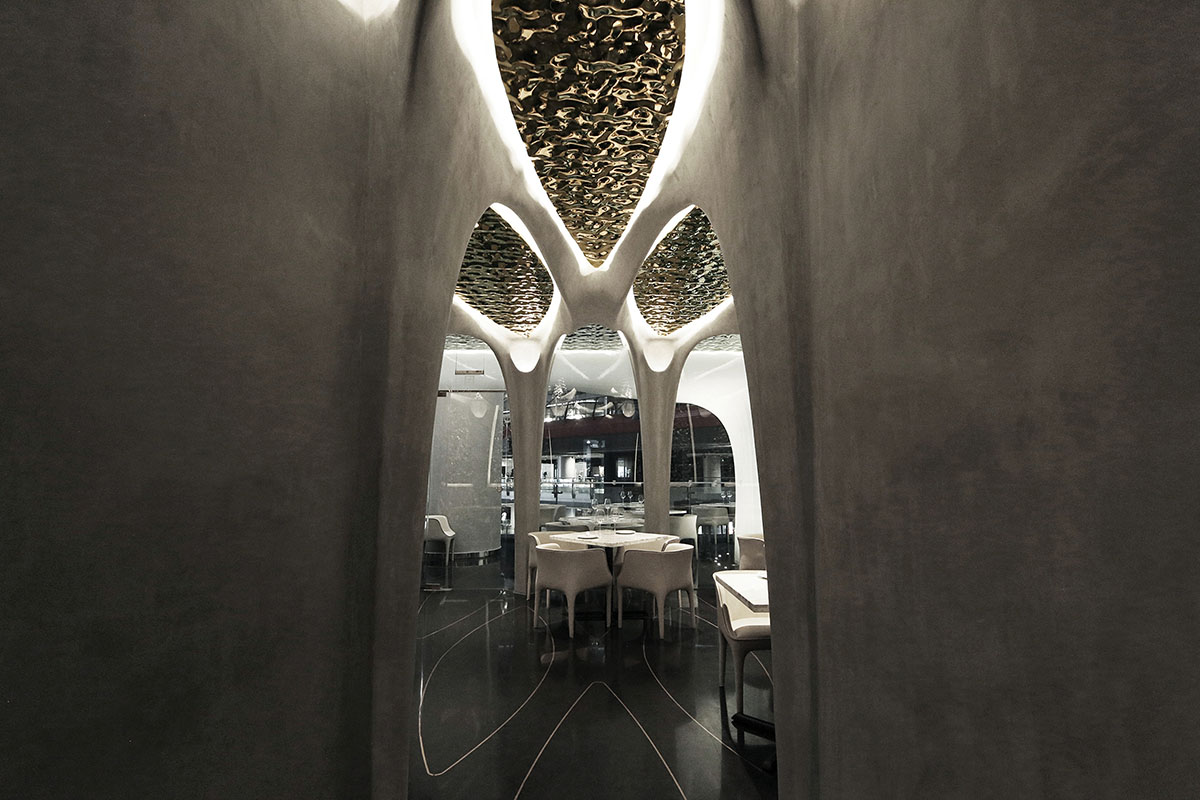
As one is standing on a bridge to admire the scenery, they might be unknown to the fact that somebody else might be admiring them. In the same way, when you decorate the windows to your house, the same window that you’ve decorated could appear in somebody else’s’ dream. In the situation of Casa Talia, each person has their own unique interactions and this unique communication between man and environment is what makes this installation rich and fulfilling.
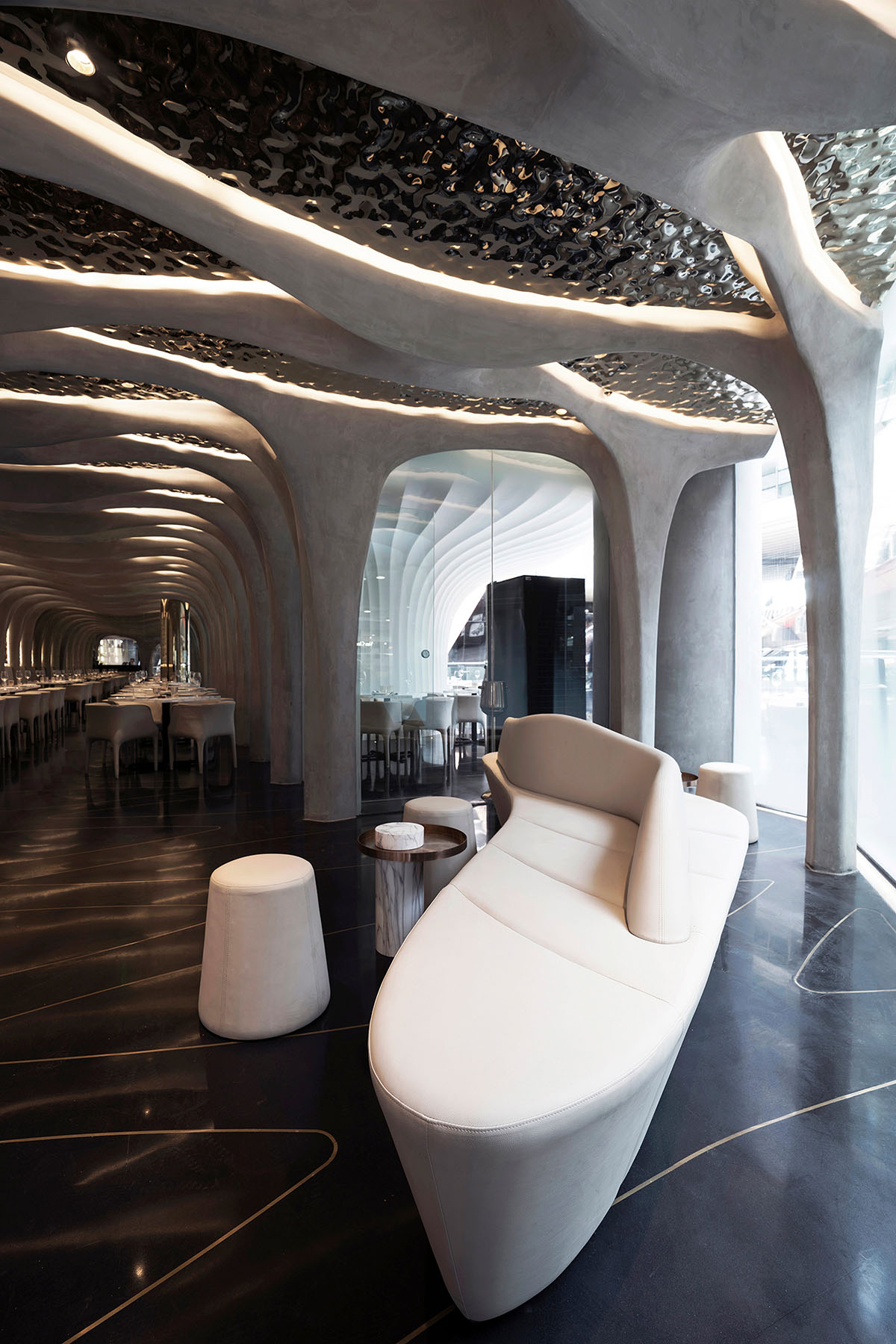
To Liu Haowei, no matter who or for what occasion people visit Casa Talia, he hopes that they will all be exposed to an interesting and extraordinary experience.
He believes that the design of contemporary space is not necessarily only confined to design, but is also detrimental to the promotion of commerce in the area through the creation of a distinguished space. In fact, everything that is felt here through the senses breaks the boundary between the real and the virtual and is the direction that many corporations in the offline consumer market has sought to develop.
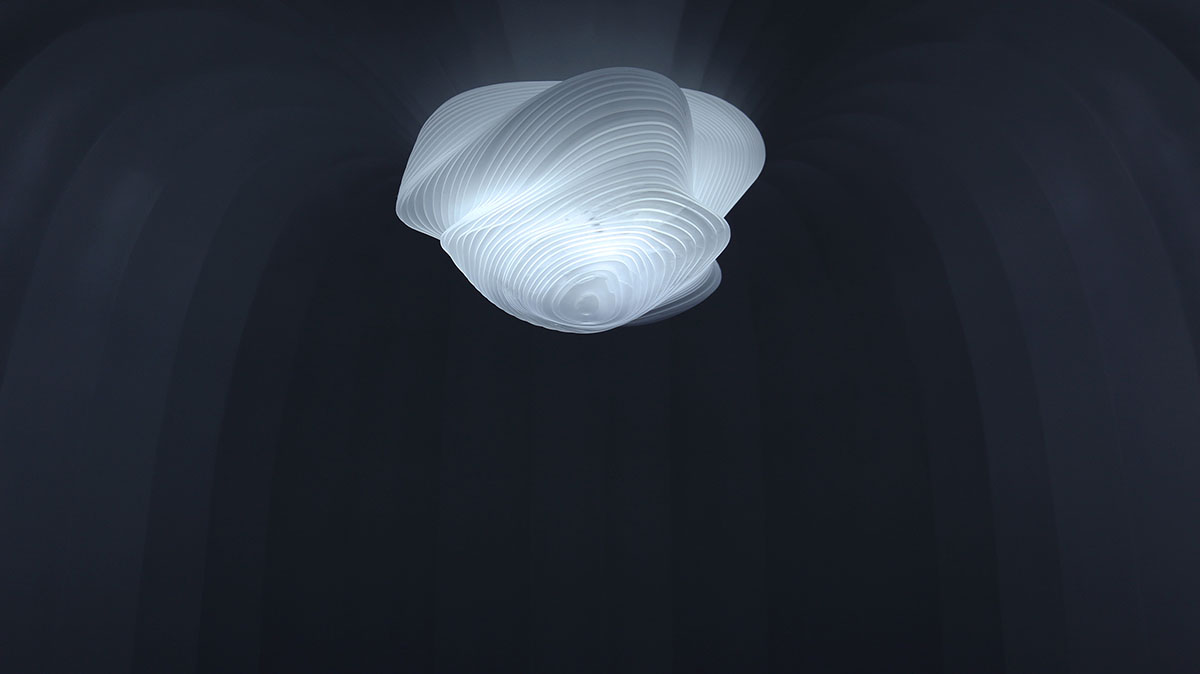
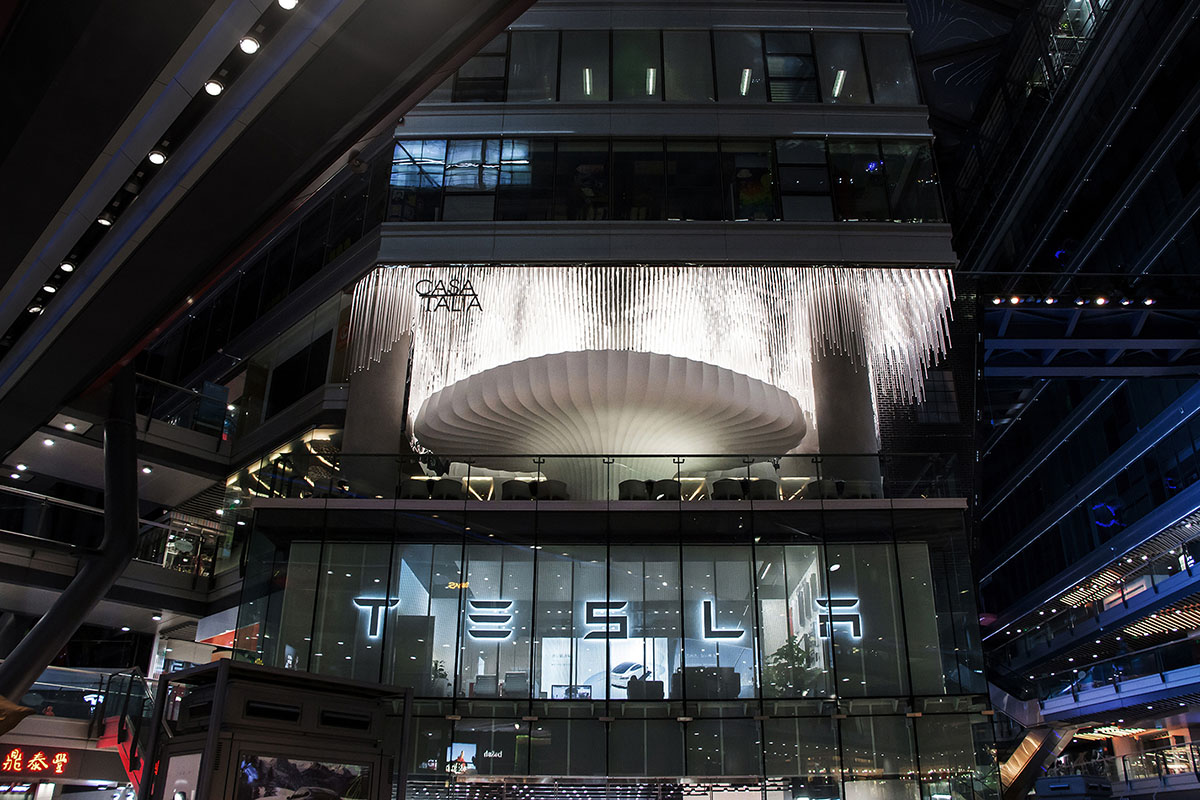

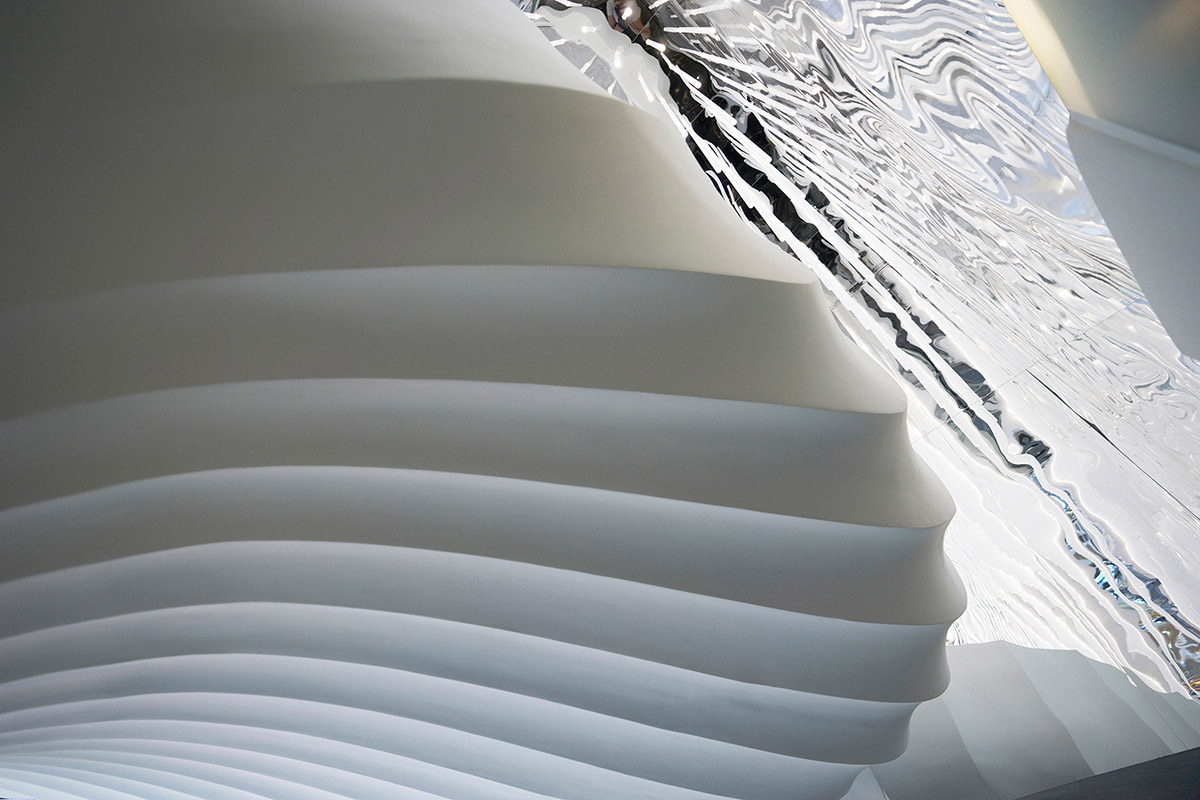

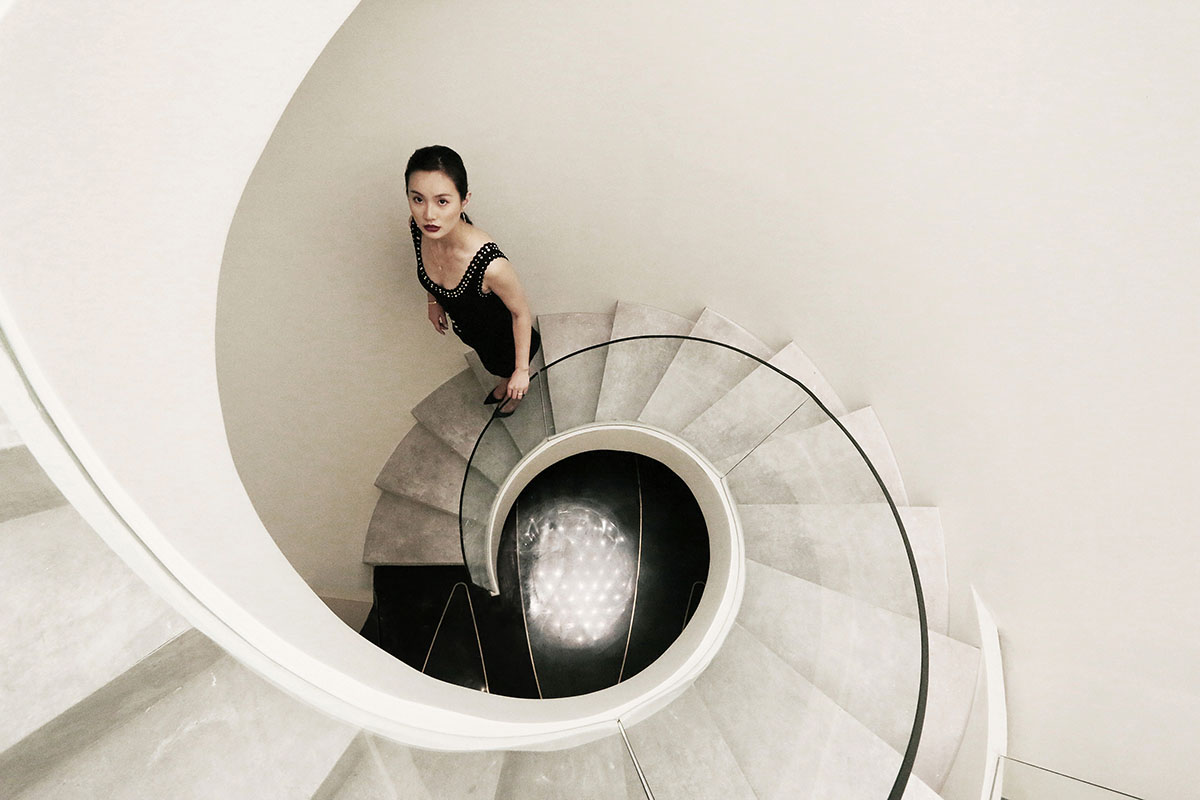
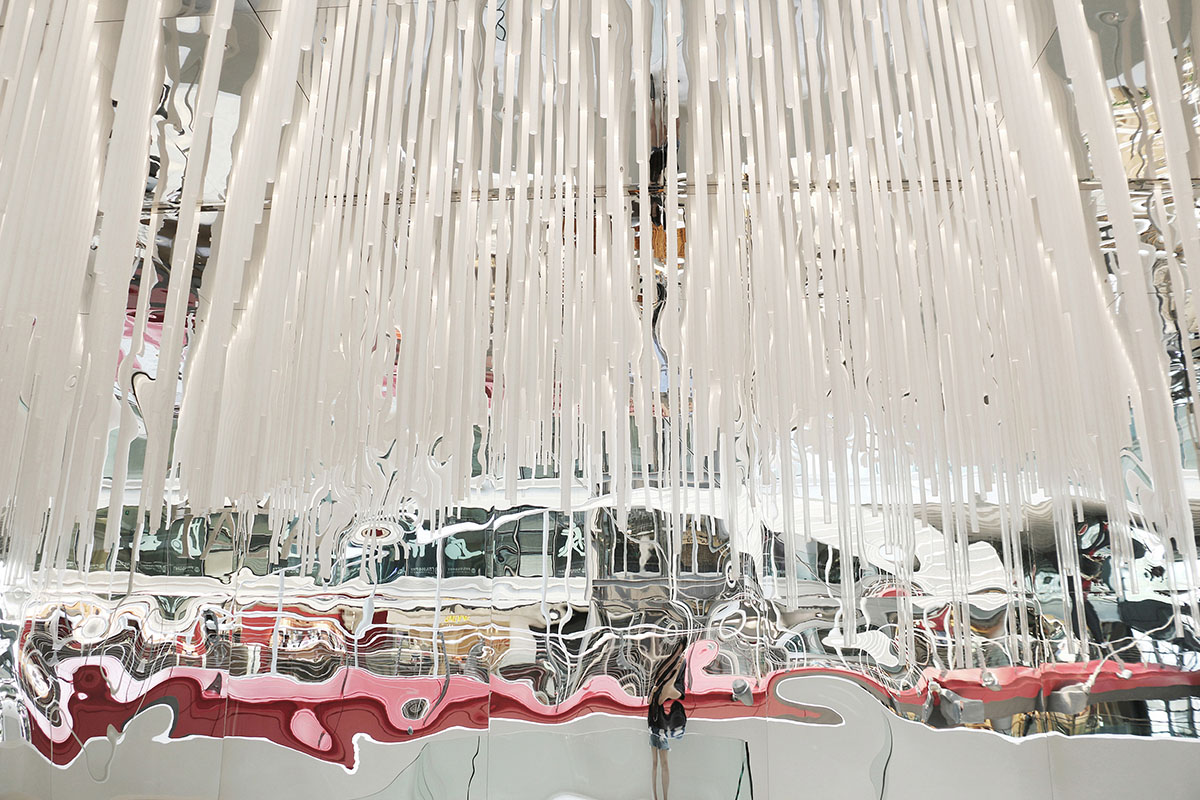
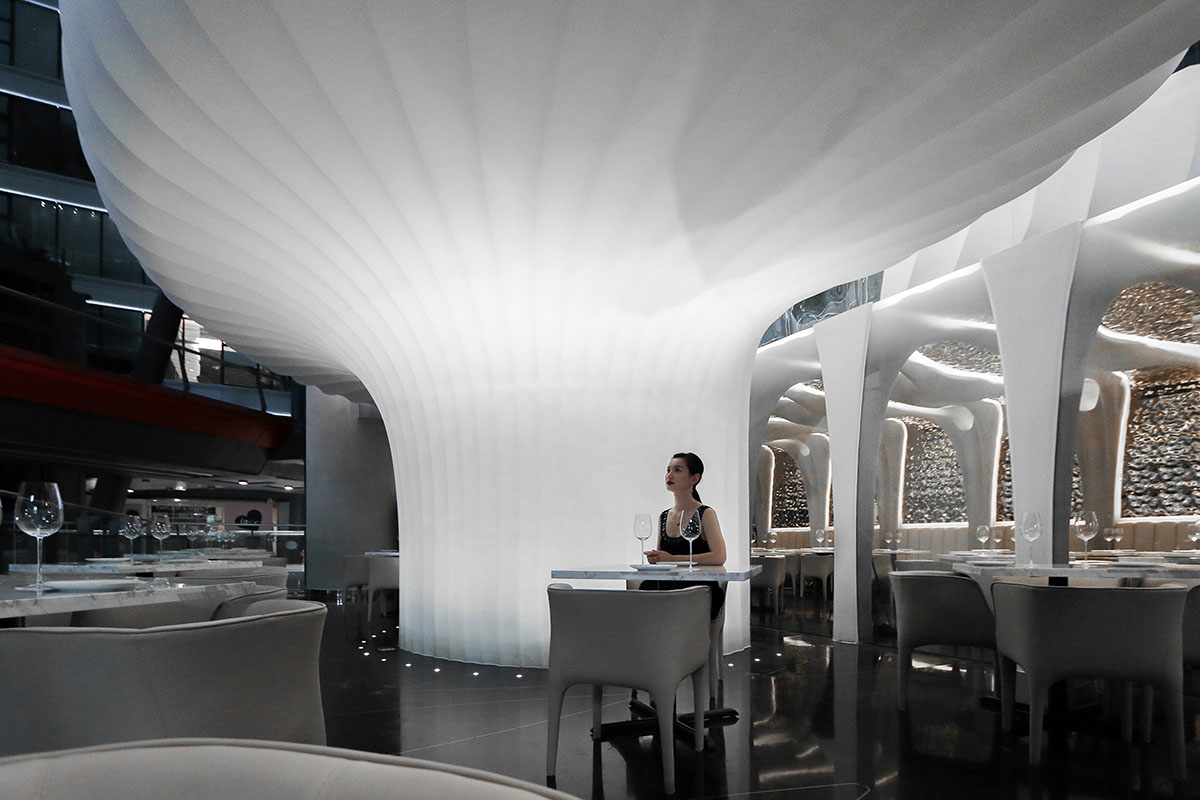

Project facts
Client: TIAGO
Architect Studio: CAA Architects
Lead Architect: Liu Haowei
Design Team: Edward Ednilao, Zhang Pan, Felix Amiss, Ren Zhuoying, Dengyue
Consultant:
Lighting Consultant: Beijing Ningzhi Lighting Design Co., Ltd.
Material Consultant: Qi Ku (Bei Jing) Architectural Decoration Material Co.,Ltd
Structural Consultant: Beijing Zhongdihengcheng Architectual Design CO.LTD
Manufacture: Ya Xin(Bei Jing) Architectural Decoration Co.,Ltd
Design Date: 01/2019
Completed: 07/2019
Area: 300m²
Location: Parkview Green, Beijing
Editor: Misaki, He Xuan, Sam
All images © CAA Architects | Felix Amiss, Edward Ednilao, Ren Zhuoying
> via CAA Architects
